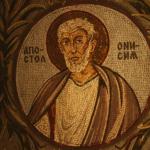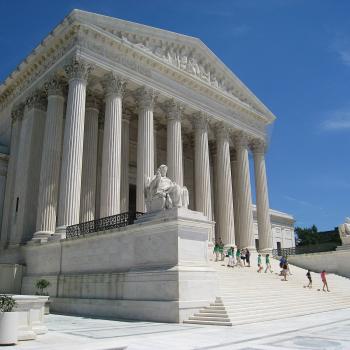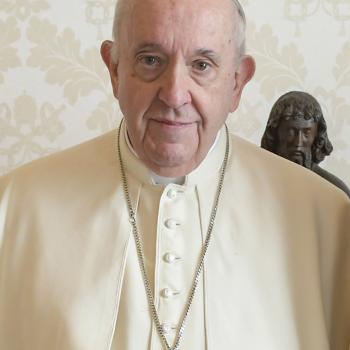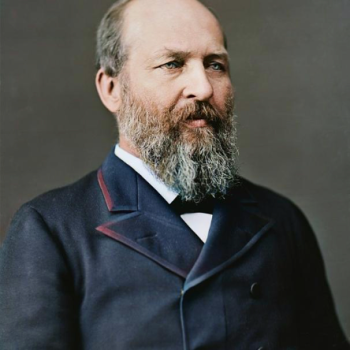A review of John G. Turner, Joseph Smith: The Rise and Fall of an American Prophet (Yale University Press, 2025)
Few figures in American religious history are as difficult to write about as Joseph Smith, the founder of the Church of Jesus Christ of Latter-day Saints.
That’s not because of a lack of records. Smith left behind numerous writings, including sermons, books, prophetic revelations, and personal correspondence. Numerous friends and acquaintances (as well as personal enemies) left behind their own accounts of their interactions with him. And for much of his life, his activities were covered at length in newspapers. Few nineteenth-century Americans outside of elected office were as extensively documented as Smith.
Dishonest, Deluded, or Divinely Inspired?
Yet Smith remains a controversial enigma, mainly because of his polarizing claims. According to his own testimony (and that of his supporters), he was a prophet of God who was shown golden plates by an angel and a series of revelations after that. To paraphrase C. S. Lewis’s famous trilemma about Jesus’s identity – the claim that Jesus was either “Lord, liar, or lunatic” – most people who have studied Smith’s life have assumed that he was either dishonest, deluded, or divinely inspired. There just doesn’t seem to be any other possibility.
There are good biographies of Smith on each side of this divide. The premier example of an academic biography that portrays Smith as a genuine prophet – that is, someone who received genuine revelations from God and who really did receive golden plates from an angel – is Richard Lyman Bushman’s Rough Stone Rolling, which argues that Smith was a flawed person who nevertheless, according to the best interpretation of the evidence, received revelations from God that were greater than he could ever invent himself and that he struggled to live up to.
Native Genius
The most famous example of a critical biography that depicted Smith as a deceiver is probably Fawn Brodie’s No Man Knows My History (1945), which revolutionized the field when it was published eighty years ago – and which has provided plenty of fodder for anti-Mormon critics ever since.
John Turner’s new biography, Joseph Smith: The Rise and Fall of an American Prophet, avoids either of these extremes. Although Turner says that he does not believe that Smith actually found golden plates – and that he therefore deliberately deceived others in claiming that he did – he suggests that this should make us admire Smith’s talents even more, since he was not a simple conduit for God’s revelation but was instead a creative author, an inventor of a new religious system, and an effective leader. “Only if we understand Joseph Smith as the book’s author can be we credit him for the native genius necessary to produce a complex set of interlocking narratives,” Turner says (p. 68).

He encourages us to marvel at Smith’s talent – not just in writing the Book of Mormon, but in financing its publication (which he was able to do only by convincing others to put up their capital, since he was absolutely broke) and in convincing others of his prophetic authority. “It was an incredibly unlikely achievement,” Turner notes. “The Book of Mormon project from start to finish was a stunning display of American audacity. Such chutzpah, if displayed by a political or business leader rather than a religious figure, would almost certainly elicit more respect than ridicule or combination” (p. 68). And if this is true for Smith’s authorship of the Book of Mormon, it’s equally true of Smith’s other work as prophet and church president.
He Kept His Following
Turner is especially interested in what Molly Worthen in her recent book Spellbound termed Smith’s “charisma” – that is, his outward projection of himself that won over skeptics and attracted a following of remarkably dedicated people. As Turner notes, Smith’s era was an age of religious prophets, but none acquired such an enduring following as Smith. American religious historians may talk occasionally about William Miller or the followers of Mother Ann Lee (the founder of the Shakers), but only Smith has become the subject of Broadway plays and recent cartoons. Even in his own lifetime he achieved a degree of notoriety that few other religious leaders did. There has to be some explanation of why he was able to win over skeptics – and why he kept his following even after some of his prophecies failed (which was not the case for the hapless Miller after his prediction of Jesus’s return turned out to be wrong).
To answer these questions, Turner’s biography, which is based on an enormous amount of research and a careful evaluation of the evidence, does not dismiss Smith as a mere product of his time, as some naturalistic histories of Smith and early Mormonism have tried to do. To be sure, the book does engage in extensive analysis of Smith’s early nineteenth-century context and the questions and ideas that were circulating at the time, and those parts of the book are especially illuminating. Turner notes that many aspects of Smith’s life that may seem most bizarre – like his treasure-hunting, his views on race, his propagation of the idea that Native Americans were descendants of the ancient Israelites, or his interest in restoring the biblical practice of polygamy – should be understood in the context of early nineteenth-century American ideas. But as Turner suggests, Smith’s work was more than the sum of its parts, and his ideas cannot be explained simply as a pastiche of concepts borrowed from other thinkers. He was a creative genius in his own right, and even if he borrowed from others at times, his synthesis and applications were uniquely his own. As Turner observes, “the Book of Mormon does not closely resemble any known text in either its narrative or its argument” (p. 67).
Seer Stones
Smith faced repeated setbacks throughout his life, yet he consistently demonstrated a remarkable ability to overcome them. Before his announcement of the discovery of the golden plates, he was an impoverished failure. His parents’ farming efforts had never been able to deliver the family from a cycle of debt and poverty, and his own treasure-hunting business had failed to deliver on its promises. He had the local reputation of a ne’er do well, and he was arrested for violating a state law against claiming to be able to find treasure through magic. But, Turner says, “as would be customary for the rest of his life, he grew more audacious in the wake of failure” (p. 35). He announced that he had not only found a treasure – golden plates – but that he would use “seer stones” to translate what was on those plates and reveal God’s message to the world.
Smith continued to deal with misfortune by embarking on ever more daring gambits. When a skeptical acquaintance stole an initial draft of the Book of Mormon before he could publish it, he was in despair for a short time until he figured out how to plausibly get a replacement revelation through his golden plates. When angry mobs attacked his community or when his followers were driven out from places that he had insisted that the Lord had led them to as a new “Zion,” he had to recalibrate and persuade his community to continue on in the midst of hardships. When his bank failed and he had to flee the state of Ohio to escape the prosecutorial arm of the law, he had to convince his community of followers to stay with him and continue moving west. When his relationship with his wife was endangered and his moral reputation was on the line because of an affair that he had with a household servant girl, he had to figure out how to win back the trust of both his wife Emma and a few skeptical followers. And when, during the last year of his life, he began marrying multiple women – including taking the wives of some who were already married to other Mormons – he had to convince people to follow his authority in a new practice that threatened to divide the community (and which, in fact, did split the LDS Church immediately after his death). And he did all of this in less than a decade and a half, since he was killed at the age of only 38.
Transcend the Denominational Divisions
In the midst of all of this, Smith created a new theology that was both remarkably progressive and rooted in purported ancient truths. The Book of Mormon presents an optimistic view of humanity that is strongly anti-Calvinist. Through their own free choices, people can find the path to God and experience a religious unity that will transcend the denominational divisions that religious elites have imposed. It is a theology that celebrates the power of the common person. But it is not a static theology. Smith taught from the very beginning that God had never intended the spiritual gifts of prophecy, tongues-speaking, and miracles to cease with the end of the New Testament era, as so many Protestants of his day (especially those from the Reformed wing of Protestantism) believed.
The pattern of continued revelation meant that Mormonism would continue to evolve. Smith allowed his followers to speak in tongues and prophesy, even while positioning himself as the community’s premier prophet and ultimate authority. Somehow Smith managed to balance the tension between potentially competing revelations from multiple sources, and he likewise managed to balance the complexities that arose from the continuously evolving body of his own revelations. While the Book of Mormon served as the framework for that evolving theology, few could have imagined all of the ways in which it would continue to evolve over the remaining fourteen years of Smith’s life after the Book of Mormon’s publication. But with all of these changes, the fundamental optimism about human nature and the future remained. Mormonism was apocalyptic, but its apocalypticism was unusually optimistic, with a focus on the universal opportunity to salvation for everyone – even, as Smith eventually taught, the souls who had died without having made the choice in this life to be baptized into the true church.
Way to the Celestial Kingdom
Despite the progressive development and seeming eclecticism of Mormon theology, it was also remarkably cohesive, since all of its evolutions were natural applications of ideas suggested by Smith’s original revelation in the Book of Mormon. The distinctive LDS Church practice of baptism for the dead – which provided salvation for individuals who had died without embracing the Mormon faith, but who chose after death to receive it – was a logical corollary to the Book of Mormon’s emphasis on the opportunity that all people had to freely choose God’s universal offer of salvation. And it was extremely popular among the early Mormons, since it assured them that the way to the celestial kingdom was still open to their deceased loved ones who had died before Smith’s revelation of the true church – as well as famous Americans such as George Washington or William Henry Harrison, who received involuntary proxy baptisms after their deaths from Mormons who were eager to secure their salvation.
In Spellbound, Molly Worthen argues that people are attracted to charismatic figures because they want what that person has, and they believe that by following a particular charismatic leader, they will be able to share in that person’s success. If that’s true, Turner’s biographical study of Smith gives us a better understanding of what exactly his followers might have seen in him. As an unusually self-confident, optimistic, ever-progressing and evolving individual, he showed them how to find a way in early nineteenth-century America by recovering ancient truths while adapting to a continually changing world.
Everything Was Subject to Revision
Turner concludes his study with a reflection on Smith’s enduring legacy. Smith began his life as an uneducated, impoverished, itinerant, failed treasure-hunter, but he created a faith that today claims more than 17 million adherents. Smith’s most famous literary work, the Book of Mormon, has been printed and translated more times than any other book ever written in America. But Smith’s own life went beyond even his religion or his book. “No church, archive, or book has been able to constrain Joseph Smith,” Turner states. “Whether it was religion, marriage, or politics, he burst through the conventions of his time. Brigham Young once said that when he encountered Mormonism, he couldn’t let it go, in part because he couldn’t put it in a box, couldn’t fully figure it out. The same holds for Joseph Smith. He was a day laborer, visionary, seer, money-digger, glass-looker, translator, revelator, prophet, elder, high priest, president, patriarch, merchant, banker, prisoner, wrestler, real estate speculator, prolific polygamist, lieutenant general, Master Mason, and mayor. With Joseph Smith, everything was subject to revision, from the Bible to the church’s hierarchy to its sacred rituals. He was never finished, and at least as long as his devotees and their detractors care about this legacy, we will never be finished with him” (p. 376).
If that’s true, Turner’s biography will certainly not be the last word on Joseph Smith. But for the moment, it may be the best word, because it offers a balanced, extensively researched portrait that situates Smith in his early nineteenth-century American context while also showing how he transcended his own circumstances to become one of the most influential Americans of all time. Precisely by not taking Smith at his word Turner shows us why we have to take him seriously and respect his creative talents all the more. Smith may have tried to invent his own persona – but the truth behind the mask may be even more fascinating than the legend. Underneath the mask of divine prophet was a writer whose literary work would reach more people than Mark Twain or Harriet Beecher Stowe, a religious systematizer whose theology would do more to reshape global religion than any of the revivalists of his own era ever could, and a leader whose talents of persuasion rivaled those of the most successful entrepreneurs or politicians. His life, in short, is worth understanding – and Turner’s biographical study is a good place to start.













